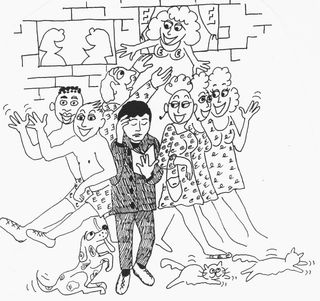
Myers-Briggs
The Anatomy of an MBTI Personality
Putting your MBTI preferences in order.
Posted June 7, 2016

I recently wrote a blog on The Anatomy of a Personality using the Enneagram system of 9 personalities. Both the Enneagram and the MBTIR are useful for understanding oneself and others.
I’m a 5-Observer with a 4-Romantic wing in the Enneagram system, and an INFP in the MBTIr system (Introvert, iNtuitive, Feeling, Perceiving). Many 5-Observers are INTPs, however—Thinking types.
While each of the 16 MBTIr personalities includes 4 of the following 8 preferences, we can’t go through a single day without using all 8: extraversion, introversion, intuition, sensing, feeling, thinking, perceiving, and judging.
We INFPs’ favor the Feeling preference, but we tend to keep our feelings relatively hidden or private and instead show our iNtuition to the world.
INFPs tend to be gentle and idealistic. From The Happy Introvert: “Introverted Feelers with iNtuition (INFPs) are creative, recognize potential in others, and understand abstract, intangible aspects of life. If you are an INFP, honor your need for quiet and consciously use your thinking ability to determine whether you have overlooked any facts or details. Look for opportunities where you can engage your imagination.”
Perceiving and Judging refer to how we gather information, whether through iNtuition or Sensing. If you have a J at the end of your type, you show Feeling or Thinking to the world. The P in INFP stands for the Perceiving preference, iNtuition. N’s focus on possibilities.
This is how I rate the parts of my own personality:
1. Introverted Feeling: This is my favorite, most reliable and comfortable function. I need people some, but I am happy doing what I like by myself: reading, writing, playing the piano, and gardening. I like finding out about other people (my interest in personality) and exploring feelings through the arts.
2. Extraverted iNtuition: This is my auxiliary function. I keep my options and my mind open. I share my iNtuition more than I share Feelings; I like to tell people about connections I’ve thought of that others haven’t thought of and I like to focus on systems, patterns and being innovative.
An example of where I “extravert” my iNtuition is when I attend dream groups and share my hunches about dreams. I try not to make leaps others have a hard time following.
3. Introverted iNtuition: I contemplate possibilities, enjoy the unknown, and like complicated ideas.
4. Extraverted Thinking: My Thinking preference is close to my Feeling preference. I try to be logical, clear, and objective, and I dislike emotionality.
5. Introverted Thinking: I use this when reading and writing.
6. Introverted Sensation: I use this when drawing cartoons. I’m not so good at knowing where things are or remembering dates and facts.
7. Extraverted Sensation: I use Sensation in playing the piano—memorizing pieces, getting details right, and practicing over and over—and gardening.
8. Extraverted Feeling: I show my feelings to others mostly in my family and with close friends. I like to talk to people when I feel safe. I learned how to give speeches, but it was hard at first.
Playing the piano uses all 8 preferences: Feeling (for expression), Thinking (understanding the structure and historical context of the music), iNtuition (for possible new ways to play a piece), Sensation (the act of making music), Introversion (for my personal connection to the music), and Extraversion (for communicating to the audience), Perceiving (for spontaneity), Judging (for making decisions).
See The Happy Introvert – A wild and crazy guide for celebrating your true self. Chapters on relationship, parenting, adolescence, creativity, Jung, neurology, the MBTI, and an Afterword on the movie, Napoleon Dynamite.



